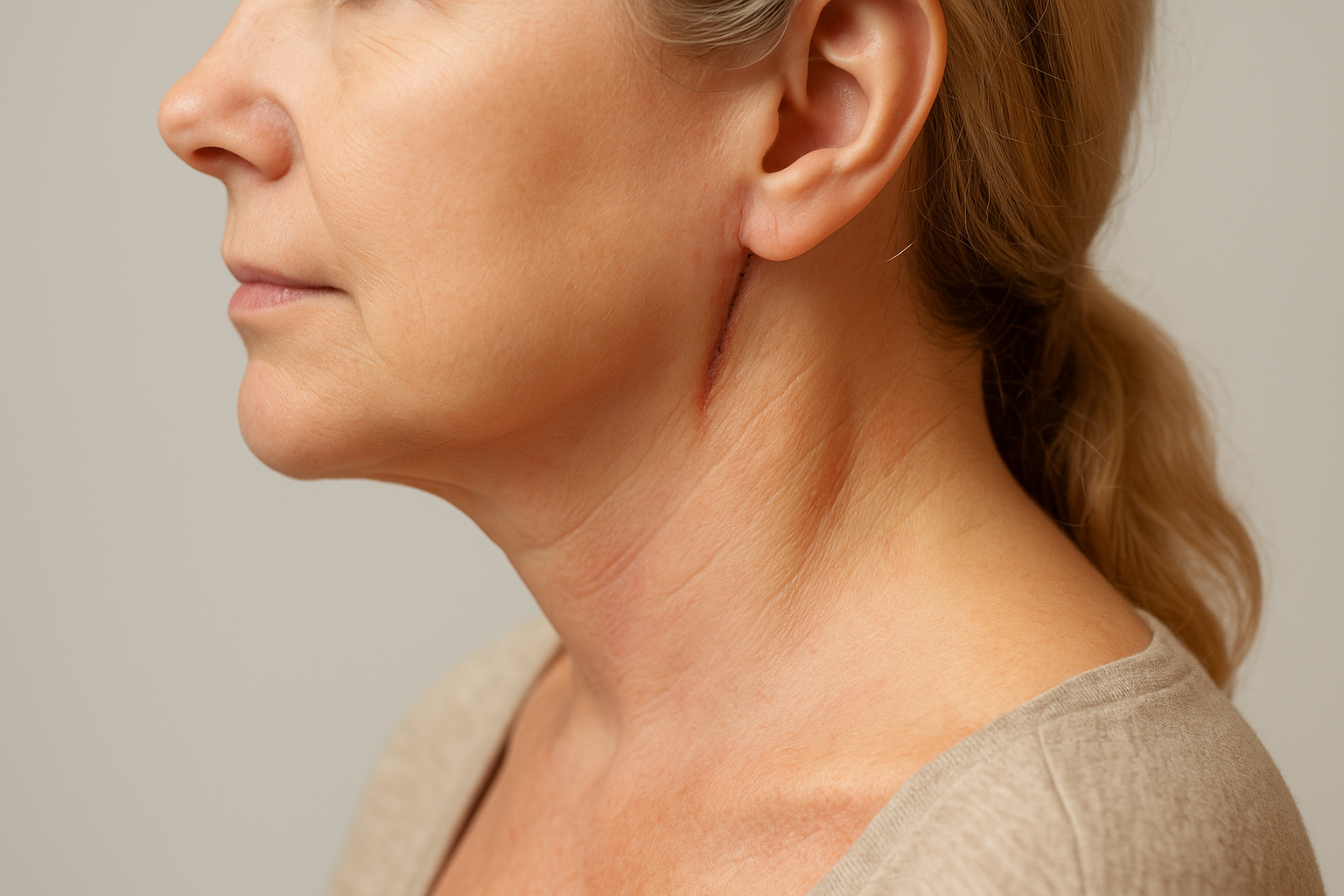
My goal in neck lift surgery is to restore harmony between the jawline and neck by addressing deeper muscular support. The recovery process is designed to allow these tissues to settle gradually, ensuring long-lasting, natural outcomes.
This article is for educational purposes and does not substitute for medical advice. Individual recovery plans vary and should be discussed during consultation. For general procedure details, see: Neck Lift Surgery.
First 24–72 Hours: The Early Stage
During the initial days after surgery, patients may experience tightness, swelling, and mild discomfort in the neck area. Keeping the head elevated at a 30–45° angle, applying cold compresses, and using prescribed medications regularly can help minimize swelling. If a drain is placed, it will be removed within the first day or two under clinical supervision.
- Keep dressings dry and intact.
- Maintain hydration and consume soft foods.
- Avoid alcohol, nicotine, and medications that increase bleeding risk unless cleared by your doctor.
Week 1–2: Returning to Social Life
Swelling and bruising typically improve after the first week. Sutures are usually removed between day 5–7, or they may dissolve naturally depending on the technique used. At this stage, light activities and desk work can often be resumed after 7–10 days. If a compression garment or chin strap has been recommended, it should be worn as directed to support healing and contour definition.
Weeks 3–6: Increasing Activity and Scar Care
Patients may start light exercise, such as walking, after the early phase, but strenuous workouts or heavy lifting should be postponed for about 4–6 weeks. At this stage, silicone gels, scar tapes, or other topical products may be introduced to help scars mature evenly. Sun protection remains crucial to prevent pigmentation changes in healing skin.
When Do Final Results Appear?
Visible contour improvement is evident within weeks, but residual swelling and subtle texture refinement may take several months to stabilize. The final jawline definition usually appears once the deep tissues have fully adapted to their new support, creating a smoother neck profile.
At-Home Recovery Checklist
- Head elevation: 30–45° during the first days.
- Cold compresses: intermittent for the first 48–72 hours.
- Wound care: follow cleaning and moisturizing instructions provided.
- Neck movements: avoid sudden or wide rotations.
- Nicotine: strictly avoid until complete healing.
- Follow-up visits: attend all scheduled check-ins.
Warning Signs: When to Contact Your Surgeon
Contact your clinic immediately if you notice any of the following:
- Sudden increase in pain or asymmetry.
- Uncontrolled bleeding or fluid discharge.
- Severe swelling, redness, or warmth around the incision.
- Fever or difficulty breathing.
Longevity of Results: What Determines It?
The durability of results depends primarily on addressing the deep support structures—including the platysma muscle and subplatysmal fat compartments. This ensures not just surface tightening but restoration of the neck’s internal framework. Other influencing factors include:
- Skin quality and elasticity — consistent sun protection helps preserve results.
- Weight stability — avoid significant weight fluctuations.
- Lifestyle habits — smoking and poor sleep can reduce tissue quality.
- Comprehensive approach — combining neck lift with facelift or chin contouring often enhances balance and longevity.
Frequently Asked Questions
When can I return to work?
Most patients resume desk work within 7–10 days. More physically demanding jobs may require additional recovery time.
Will the scars be visible?
Incisions are hidden within natural creases around the ear and under the chin. Scars fade gradually and are managed with post-care protocols.
Are emotional fluctuations normal after surgery?
Yes, temporary mood changes are common as swelling resolves and the face adjusts to its new contours. They usually subside as healing progresses.
